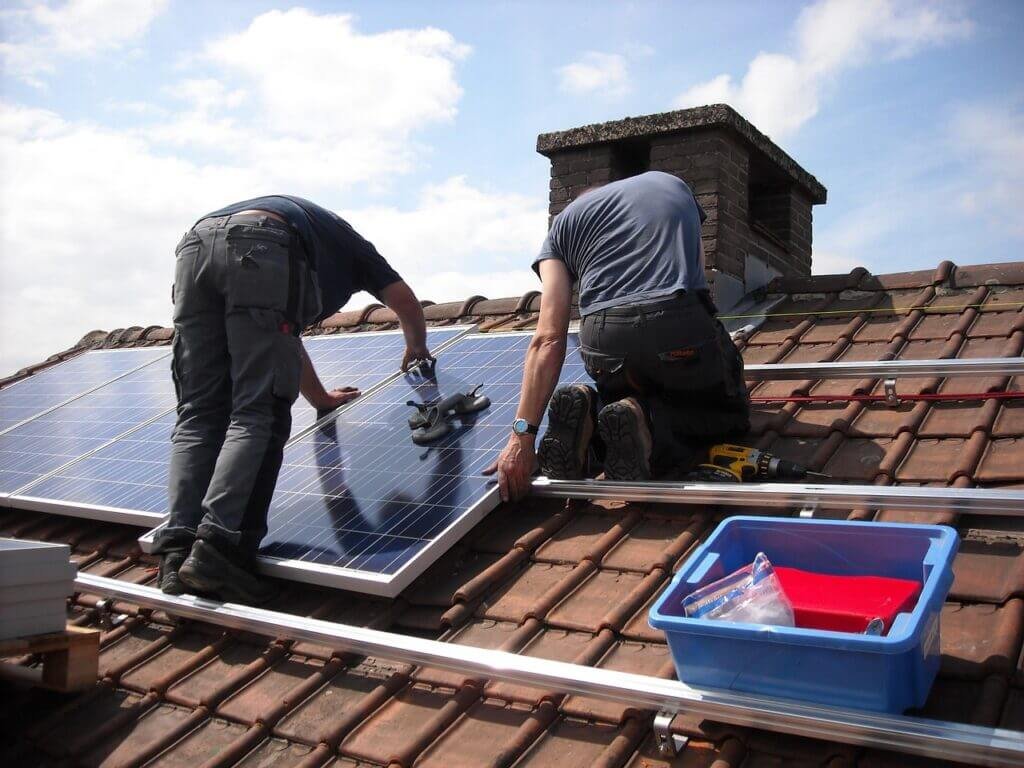If you’re an urban gardener, you know all too well the struggle of limited sunlight. With tall buildings and shadows cast by neighboring structures, finding the perfect spot for your plants to thrive can feel like a never-ending challenge. But fear not, for there are clever solutions to maximize the sunlight in your urban garden. From strategic plant placement to the use of reflective materials, this article will guide you on how to make the most of every ray of sunshine, ensuring your plants flourish in spite of the urban jungle.

Understanding the Importance of Sunlight in Urban Gardening
Sunlight plays a crucial role in the growth and well-being of plants, making it essential to understand its importance in urban gardening. While the challenges of limited sunlight in urban gardens are prevalent, there are several strategies you can employ to maximize sunlight and create an optimal environment for your plants to thrive.
The Benefits of Sunlight for Plants
Sunlight is the primary source of energy for plants through the process of photosynthesis. It provides the necessary light spectrum for plants to convert carbon dioxide and water into glucose and oxygen, promoting growth, and ensuring their overall health. Sunlight also helps in the production of essential vitamins and pigments, aiding in plants’ ability to resist diseases and pests.
The Challenges of Limited Sunlight in Urban Gardens
Urban gardens often face limited sunlight due to surrounding buildings, tall structures, or other obstacles that cast shadows over garden areas. This lack of sunlight can hinder plant growth, decrease yields, and negatively impact the overall success of your garden. However, by identifying the sunniest areas in your urban garden and employing smart gardening techniques, you can overcome these challenges and optimize sunlight exposure for your plants.
Identifying the Sunniest Areas in Your Urban Garden
To make the most of the available sunlight in your urban garden, it is crucial to identify the areas that receive the maximum amount of sun throughout the day. Here are some factors to consider when analyzing the sun’s path and shadows in your garden:
Analyzing the Sun’s Path and Shadows
By observing the movement of the sun throughout the day, you can identify the areas that receive direct sunlight for the longest duration. Take note of any shadows cast by buildings, walls, or other structures that may obstruct sunlight. Understanding the sun’s path and the patterns of shadows will enable you to determine the most suitable spots for planting sun-loving crops.
Considering Obstacles and Structures
Take into account any obstacles or structures that may block sunlight in your urban garden. Tall buildings, fences, or even neighboring trees can drastically reduce the amount of sunlight reaching your plants. Find ways to work around these obstacles or consider using them strategically to create microclimates within your garden.
Using Sunlight Monitoring Tools
To accurately measure sunlight intensity, you can utilize various sunlight monitoring tools such as light meters or smartphone apps. These tools can provide valuable insights into the amount of sunlight your garden receives, allowing you to make informed decisions regarding plant placement and garden layout.

Optimizing Garden Layout for Sun Exposure
Once you have identified the sunniest areas in your urban garden, it is essential to optimize the garden layout to maximize sun exposure. Here are some strategies you can employ:
Choosing the Right Planting Locations
Different plants have varying sunlight requirements, so it is crucial to select suitable planting locations based on their needs. Before planting, research the specific sun requirements for each plant and group them accordingly. Place sun-loving plants in the sunniest areas while providing shade-tolerant plants with areas that receive partial shade.
Arranging Plants According to Sunlight Needs
Arrange your plants in a way that ensures they receive the optimal amount of sunlight throughout the day. In general, taller plants should be placed towards the north side of your garden, where they are less likely to cast shadows on smaller plants. This arrangement allows all plants to receive their required sunlight while minimizing competition for light.
Creating Sun-Friendly Microclimates
You can create microclimates within your urban garden to cater to the sunlight needs of various plants. For example, strategically placing reflective surfaces or light-colored walls can help bounce sunlight onto plants located in shaded areas. Additionally, using trellises or arches can provide vertical growing space and allow plants to climb towards available sunlight.
Maximizing Sunlight Access with Vertical Gardening
Vertical gardening is an effective technique for maximizing sunlight access in urban gardens. By utilizing vertical structures for plant growth, you can make the most of limited space and optimize the exposure of your plants to sunlight. Here are some ways to implement vertical gardening:
Utilizing Vertical Structures for Plant Growth
Make use of trellises, fences, walls, or any other vertical structures to create opportunities for plants to grow vertically. This not only saves space but also increases the exposure of plants to sunlight. Climbing plants and vines, such as tomatoes or cucumbers, can be trained to grow on these structures, maximizing their access to sunlight.
Growing Vines and Climbing Plants
Vines and climbing plants are excellent choices for vertical gardening. These plants naturally seek sunlight and will climb upwards in their search for optimal light conditions. By directing their growth along vertical structures, you can ensure they receive ample exposure to sunlight and achieve healthy growth and productivity.
Hanging Baskets and Trellises
Hanging baskets and trellises are great options for vertical gardening, even in small urban spaces. Hang baskets of trailing plants, such as strawberries or trailing petunias, in areas that receive ample sunlight. Trellises can be placed against walls or fences, allowing vine-like plants to grow upwards while receiving sufficient sunlight.

Using Reflective Materials to Enhance Sunlight
Employing reflective materials in your urban garden can enhance sunlight by directing it towards shaded areas. By strategically positioning these materials, you can maximize sunlight exposure for your plants. Here are some methods to consider:
Applying Reflective Mulch
Using reflective mulch, such as silver or metallic reflective films, can help increase sunlight absorption by plants. Apply these mulches around the base of plants, and they will reflect sunlight back onto the foliage, promoting photosynthesis and growth.
Using Mirrors or Reflective Panels
Mirrors or reflective panels can be strategically placed to redirect sunlight into shaded areas of your garden. By angling them appropriately, you can bounce sunlight onto plants that would otherwise receive limited sun exposure. However, ensure that the mirrors do not create hotspots that could damage the plants.
Positioning Light-Reflecting Surfaces
Light-colored surfaces, such as white walls or light-colored containers, can reflect sunlight onto neighboring plants. Position these surfaces strategically to make the most of available sunlight. Reflecting surfaces can help increase the overall sunlight intake for your plants and improve their growth and productivity.
Pruning and Trimming for Light Penetration
Proper pruning and trimming techniques can enhance light penetration within your urban garden. By removing overhanging branches or dense foliage, you can increase the amount of sunlight reaching your plants. Here are some pruning and trimming practices to consider:
Trimming Overhanging Branches or Foliage
Identify any branches or foliage that are obstructing sunlight to your plants and trim them accordingly. These branches may be from neighboring trees, shrubs, or even from your own garden. Regularly assessing and trimming overhanging branches will ensure that your plants receive maximum sunlight exposure.
Selective Pruning to Allow Sunlight
Selective pruning is a technique where you remove specific branches or foliage to allow more sunlight to reach your plants. This is particularly useful for dense or bushy plants that may block sunlight from reaching the lower parts of the plant. By selectively pruning, you can create airier canopies that facilitate better light penetration.
Opening up Canopy for Improved Light
For trees or shrubs with a dense canopy, opening up the foliage allows more sunlight to penetrate. This can be achieved by selectively removing some upper branches or by performing thinning cuts. Opening up the canopy promotes better air circulation and light penetration, leading to healthier and more productive plants.
Optimizing Sunlight with Container Gardening
Container gardening is a practical solution for urban gardens with limited space and sunlight. By utilizing portable planters and strategic placement, you can optimize sunlight exposure for your plants. Here’s how container gardening can help:
Using Portable Planters
Portable planters are an excellent option for maximizing sunlight as you can move them around your garden to the sunniest spots. This allows you to adapt to changing sunlight patterns throughout the day or seasons, ensuring your plants always receive the optimal amount of sunlight.
Rotating Containers for Even Exposure
If your urban garden lacks consistent sunlight exposure, rotating containers can help ensure all sides of your plants receive an even amount of sunlight. By regularly rotating the containers, you can prevent plants from leaning towards the sunlight source and promote balanced growth.
Strategically Placing Container Gardens
Place your container gardens strategically to make the most of available sunlight. Consider placing them near windows or on a balcony where they receive the maximum amount of direct sunlight. Additionally, grouping containers together can create a microclimate that provides additional protection and optimal sunlight exposure.
Choosing Sun-Tolerant and Shade-Tolerant Plants
When gardening in an urban environment with limited sunlight, it is essential to choose plants that are adaptable to different light conditions. Here are some tips for selecting sun-tolerant and shade-tolerant plants:
Researching Sun and Shade Requirements
Before selecting plants for your garden, research their specific sun and shade requirements. Some plants thrive in full sun, while others prefer partial shade. By understanding these requirements, you can choose plants that are better suited to the available sunlight in your urban garden.
Selecting Adapted Varieties
Opt for plant varieties that are known to be sun or shade tolerant. Many plant breeders have developed cultivars specifically adapted to different light conditions. These varieties are more likely to thrive in urban gardens where sunlight may be limited.
Companion Planting for Shade Protection
Companion planting is an excellent strategy for creating shade and protecting sun-sensitive plants in your urban garden. By planting taller, sun-loving plants alongside shorter, shade-tolerant plants, you can provide shade and enable them to thrive in areas with limited sunlight.
Utilizing Shade Structures for Sunlight Control
Sometimes, controlling sunlight in an urban garden involves providing shade rather than maximizing exposure. Shade structures can help protect delicate plants from intense sunlight and create favorable growing conditions. Here are some options to consider:
Installing Shade Sails or Canopies
Shade sails or canopies can be installed to provide temporary or permanent shade in your urban garden. These structures offer flexibility, allowing you to adjust the amount of shade depending on the plants’ requirements. They also protect against excessive heat and reduce water evaporation, ensuring optimal plant health.
Using Umbrellas or Sunshades
For smaller areas or container gardens, umbrellas or sunshades offer a simple and portable solution for shade control. These can be easily adjusted or moved throughout the day to provide shade as needed. Place them strategically over plants that may be prone to sunburn or heat stress during the hottest parts of the day.
Building Pergolas or Arbors
Pergolas or arbors provide a more permanent shade solution, especially for climbing plants or vines. These structures create a shaded area underneath, allowing you to grow shade-loving plants or provide respite for sun-sensitive plants. By carefully considering the positioning and size of the structure, you can achieve the desired level of shade in your garden.
Implementing Watering Strategies for Sun-Drenched Gardens
In sun-drenched urban gardens, proper watering techniques are essential to maintain the health and vitality of your plants. By adjusting irrigation frequency and using mulching techniques, you can optimize water usage and promote plant growth. Here’s how:
Adjusting Irrigation Frequency and Amounts
Plants in sun-drenched gardens are more likely to experience increased water evaporation, requiring more frequent watering. Monitor the moisture levels in your garden regularly and adjust the irrigation frequency accordingly. It is essential to water deeply to encourage deep root growth while avoiding overwatering.
Mulching to Retain Soil Moisture
Mulching is an effective technique for conserving moisture in sun-drenched gardens. Apply a layer of organic mulch, such as straw or wood chips, around the base of your plants. Mulch helps retain soil moisture, prevents weed growth, and regulates soil temperature, reducing water evaporation and ensuring your plants receive adequate hydration.
Watering Techniques for Sun-Stressed Plants
Plants exposed to excessive sunlight can experience stress and become more prone to diseases and pests. To mitigate this, consider using techniques such as drip irrigation or soaker hoses to deliver targeted and consistent watering directly to the plant roots. Avoid overhead watering during peak sunlight hours, as it can lead to water loss through evaporation.
Understanding the importance of sunlight in urban gardening and employing techniques to maximize sunlight exposure will greatly benefit the growth and productivity of your plants. By analyzing sunlight patterns, optimizing garden layout, utilizing vertical gardening, employing reflective materials, and implementing pruning, trimming, and watering strategies, you can create an optimal environment for your urban garden to thrive. Embrace the power of sunlight and watch your garden flourish!


